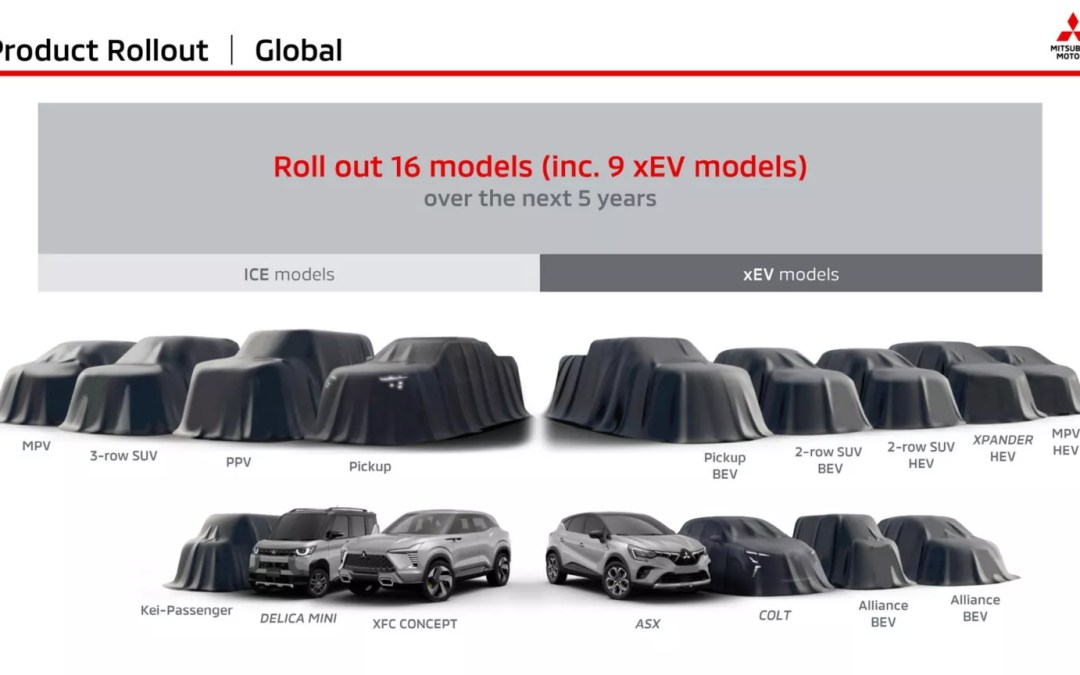Mitsubishi has released an array of debuts with ICE, hybrid and electric powertrains while also announcing an increase in R&D investment.
Mitsubishi has announced its new “Challenge 25” accompanied by some teaser images of 16 upcoming model launches which are scheduled to launch over a five-year period.
Within the line up there are ICE-powered, hybrid, and fully electric models covering the kei car, supermini, two-row SUV, three-row SUV, pickup, and minivan segments. In order to make this happen, Mitsubishi will increase its R&D investment and amplify its collaboration with the other two members of the Alliance (Renault and Nissan).
Of the 16 new models, 4 will be fully electric and 9 will be electrified in some sort of way. Most of the vehicles are shown as mockups and are hidden below covers.
The most anticipated is the ICE power pickup which is expected to arrive in 2023 as a follow up Mitsubishi Triton/L200. The model reveals its signature lighting and its profile which is characterised by the boxed shape of the wheel arches and fender extensions.
A new pick-up passenger vehicle in 2025 will share the same design and will likely serve as a replacement for the Mitsubishi Pajero Sport. It will feature a greater differentiation from the L200/Triton in terms of exterior design.
The company teased a new hybrid model the Mitsubishi Colt supermini which has been said to be a new version of the Renault Clio. The LED lighting signature suggests that the Colt will be based on the revised Clio, with styling changes limited to the redesigned grille and Mitsubishi badges.
The Mitsubishi XPander will get a hybrid version in 2024, followed by an electrified variant of the ICE-powered minivan. Closer to 2025, a new hybrid two-row SUV will be revealed.
Mitubishi has released four teaser electric models including the fully electric pick up. To support these new vehicles the company has announced a 30% increase in R&D expenses and capital investment. Investments will begin in 2026, with 70% for electrification, IT, and new businesses. By 2030, Mitsubishi will invest ¥210 billion ($1.5 billion) in 15 GWh worth of batteries.





